Disclosure: Meeple Mountain received a free copy of this product in exchange for an honest, unbiased review. This review is not intended to be an endorsement.
If you asked me which setting was inaccurate in modern board games, investments would be one of my first picks. I’m not saying games based on this setting are poorly designed or not enjoyable, but it’s clear that games like Stockpile had their mechanisms designed first, and the setting was merely a secondary concern. Many “stock market” games out there grossly misrepresent how investments work. This isn’t much of a problem for today’s game, Cryptocurrency.
That shouldn’t come as a surprise, since this game is published by Capital Gains Studio. This Singaporean company designs board games aiming towards educating the players about the financial industry while providing an original game. They are so committed to this goal that their games come with a well-written educational guide explaining the various financial concepts and how it applies to their work.
Based on the title alone, you can get a good idea about what this is all about. You and your friends are owners of a startup tech company with the ambition to take advantage of the cryptocurrency craze. Like any other investment game, the prices and supply of cryptocurrencies will fluctuate throughout the game based on the player’s actions.
There is just one small catch.
Throughout the game, rumors will spread about the four cryptocurrencies that will adjust their price. At the end of the game, the facedown rumor cards are revealed, and the cryptocurrency with the least favorable rumors becomes a Scam. That means all of the coins of that cryptocurrency are worth 0 bucks. Ties are “friendly.”
The Memes Are Real
Sometimes holding onto those coins might not be a bad idea, even if the coins are worthless. For each cryptocurrency you have the majority of coins in, you earn an extra 12 points with the HODLER award. If you are wondering what the hell a HODLER is, it is based on a 2013 cryptocurrency meme where someone wrote HODLING instead of HOLDING, expressing their desire to hold onto the currency despite price fluctuations.
The first phase of a round is the Prep phase. This is where you draw a rumor card, take a loan, and hire an expert. You want to start hiring experts since your starting team is three interns with limited capabilities.
Experts will excel in a particular area since they have special abilities related to various actions such as trading, mining, or price manipulation. It is up to you to figure out what role you play in this cyber-ecosystem because your opponents are going to rely on you as much as you rely on them. Even though this is a competitive game, it is a symbiotic one. A trader can’t do much with a limited supply of coins or price adjustments. Mining coins that nobody wants to trade is a pointless effort. Trying to play the information game on untouched cryptocurrency makes no sense.
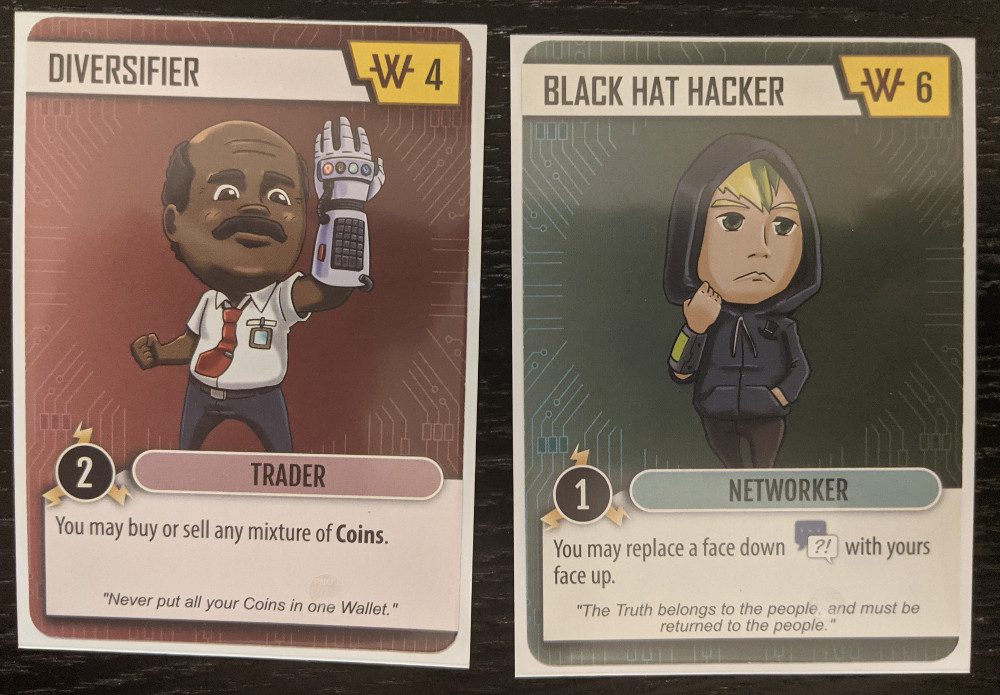
Of course, forming your team isn’t something you do on round one. Each round, you will slowly learn your friends’ plans while flexing with your strategic muscles.
After everyone hires their experts, the Prep phase ends, and we start the Action phase. It’s a straightforward phase where you decide to Trade or Mine. Every action requires you to exhaust one or more of your team members and use their energy value. The more energy you have, the stronger your action will be. This will keep going around the table until everyone’s teams are exhausted.
Sell Low, Buy High
Trading is as simple as breathing. You are going to pick a Cryptocurrency and either buy or sell coins based on the current price. Each point of energy you use allows you to trade up to 4 coins. After doing your transactions, there might be a market shift. For every 4 coins traded, there will be a change in the price, such as buying 8 coins will increase the price by 2. The catch is there is a limited supply of coins at the start of the game, and to get more, someone has to Mine.
Mining is the most complicated part of the game. Each Cryptocurrency has a track that displays the difficulty of the mining as well as the payouts. There is also a stack of gold cards with a cryptocurrency logo on them, representing the public interest.
When you mine, you draw the number of Hash cards equal to the difficulty. One of these cards is the success card, while the rest are failure cards. For each energy committed to this action, you draw one card. Straightforward stuff so far.
This means that mining is a randomized affair, but the odds are transparent. If there is a difficulty of 6 and I use 2 energy to mine, I know I have a 2 out of 6 chance. This procedure is thematic since mining cryptocurrency coins in real life have quite a bit of luck involved.
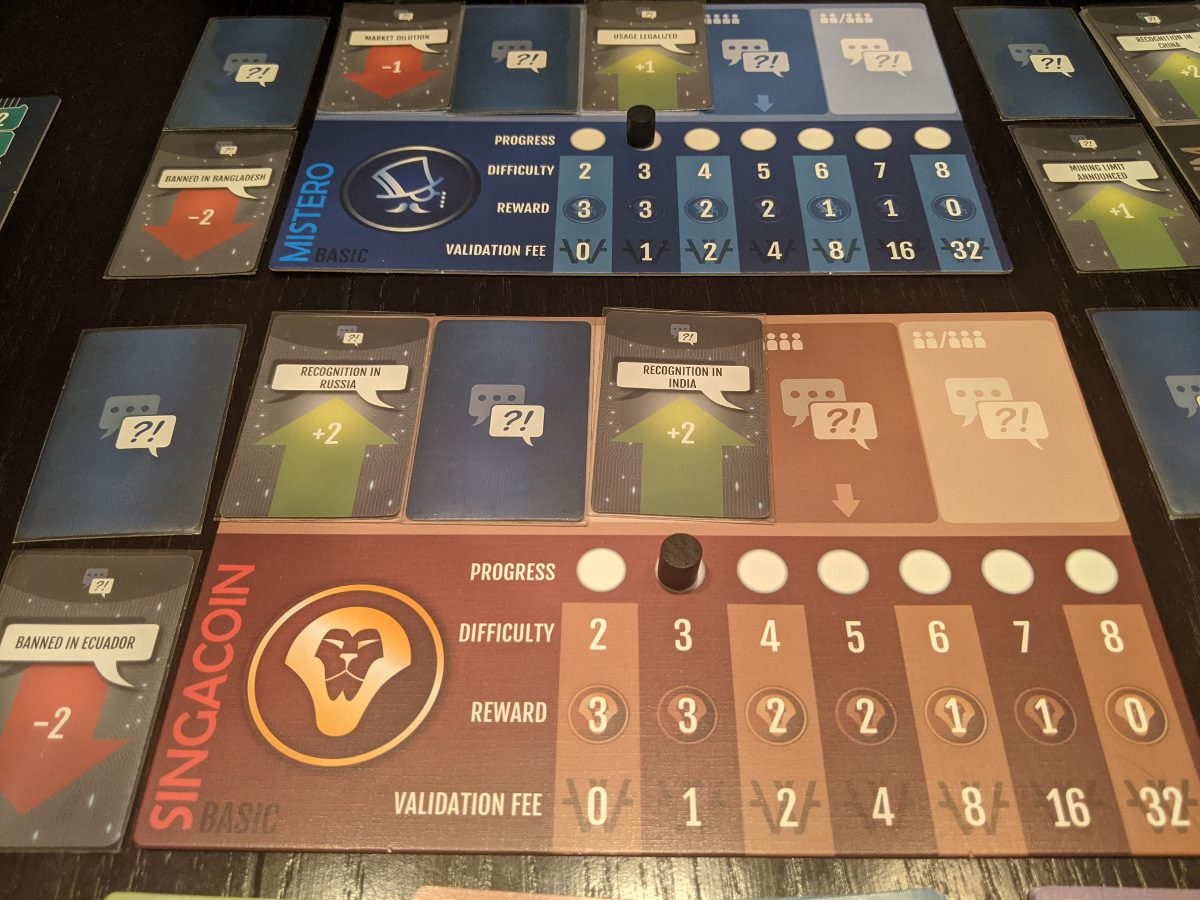
If you do mine successfully, several steps will occur. You’ll get some coins from the Unmined supply into your personal stash. Afterward, if any of the three gold cards have the matching cryptocurrency logo, you flip the cards and perform the price adjustments. Yes, that does mean it is possible for you to mine the coins and immediately watch the price sink. For each card you flip, you earn a Validation fee, representing the incentive and ledger adjustments that cryptocurrencies miners have to do in real life.
A key trait of mining is it becomes more difficult with less coin payout but higher validation fees since artificial scarcity is part of the design of an actual cryptocurrency. This demands a choice upon miners since they have to choose when to mine. Mine early for the coin supply to hold a position in that cryptocurrency or go for the end game to get those sweet validation fees?
Next will be the Upkeep phase. Everyone will pay their interest loans, refresh their team, and the option to pay off their loan. Got it? Good. Let’s move on.
Loose Words Sink Firms
The Rumor phase is where everything can go sideways. Remember the rumor card that you drew in the Prep phase? That comes into play here. Each rumor card is going to have a number representing the price change partnered with colorful flavor text. In reverse turn order, you are going to play a rumor card on a cryptocurrency’s rumor track. The rumor track alternates between faceup and facedown cards each round, with the faceup taking an immediate effect. This is a very accurate demonstration of how information can sway the value of a speculative investment even if the fundamentals are clean.
Once all of the rumor tracks are complete, the game ends. The facedown rumor cards are exposed, and the final price adjustments occur. Check to see which coin is a scam followed by the HODLER awards, then calculate the net worth. You’re the highest? Congrats, your company pulled away from the pack.
For such a small box, I was anticipating a typical lightweight filler that ends in 30 minutes. Instead, it ended up as an engaging game that never made me feel comfortable throughout the entire session. What also astounded me about this was the competitive yet collaborative environment, reminding me of the classic Modern Art by Reiner Knizia.
To do well in this game, you have to analyze the state of the board and think about the implications of your actions. Every successful move creates a butterfly effect on the board state, and it’s hard to calculate the long-term consequences due to the random nature of card draws. The information brokers, miners, and traders all have to work together to create a fertile environment for their companies but also need to one-up each other. This is a game with various branches connecting to the same tree.
To give one example of this, let’s say you want to do some Mining on your Action phase, and Flyt has the lowest difficulty right now. Sounds good, right? Except I am holding four coins of Flyt, and there are two gold cards on the table. If both of those cards are +1 price, you are giving me an 8 dollar profit. Furthermore, this also increases the supply of coins, meaning more room for the Traders to do their thing. Is it worth it?
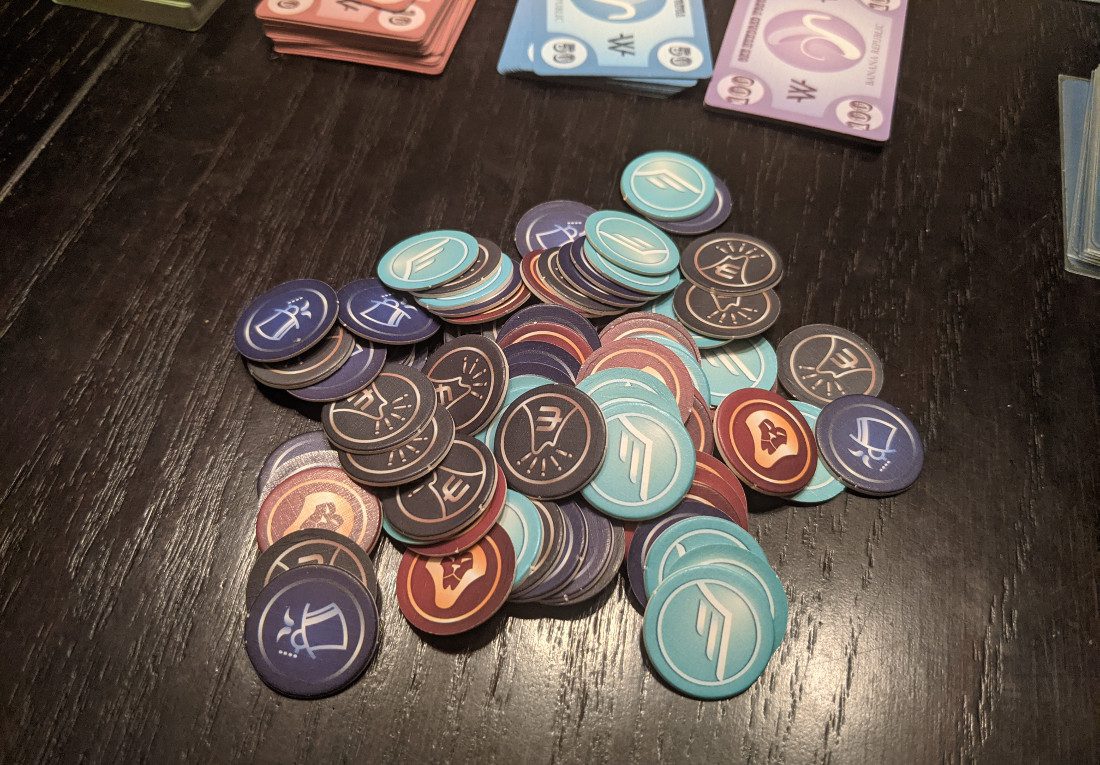
It’s Random, Deal With It
While all of this sounds good, card draws are the major obstacle in this game. If you are looking for deterministic euro-style games that reward planning for the long haul, this is going to annoy you to the point where drinking cyanide might be a viable alternative. This is all about playing the odds and dealing with chaos.
The randomization is not a concern with me since the game is honest about your chances. Even though I might have a 60% chance of succeeding at a mining attempt, I can’t ignore that 40% chance of failure. Throughout my sessions, I never felt my decisions were robbed of their integrity despite “bad luck” draws. You can work around the odds in this game, which is something I cannot say about most games using card drawing as their primary mechanism.
Also, as someone who felt the sand between their toes on the shores of speculative investing, the randomization makes perfect sense.
At its core, cryptocurrency is a decentralized currency that is not controlled by any regulatory authority. The value comes from the confidence of its investors, and that confidence comes from market activity, mining progress, and positive information.
Since this is about you and your friends starting their own companies to take advantage of this craze, it doesn’t make sense to have full control of these currencies. Sure, you are the “protagonist” of this narrative, but you cannot ignore the fact that in a sea of investors, you and your friends are just specks of salt. It is possible to have some influence on these four cryptocurrencies, but to have complete control would undermine the game’s theme.
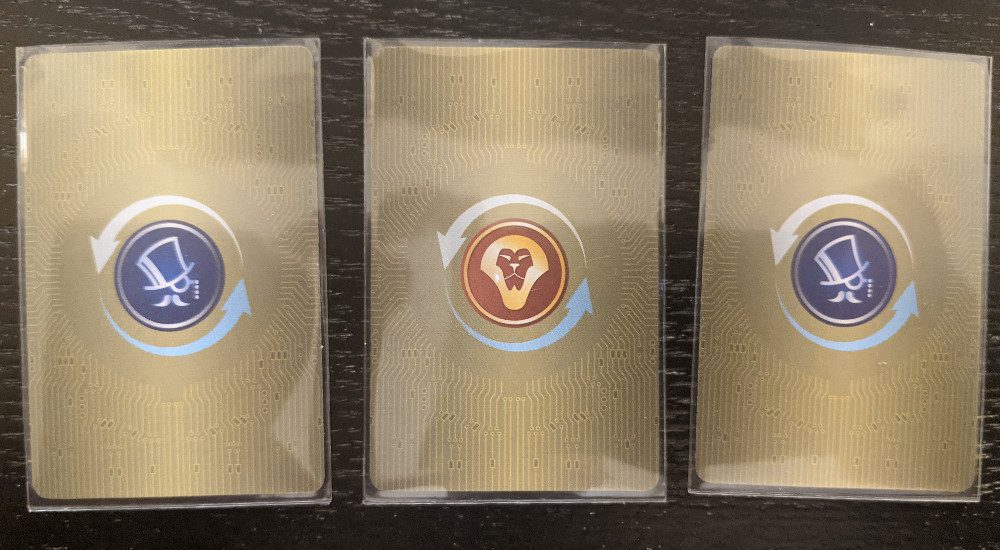
Even the mining makes sense with random cards. Mining is, at its core, a complicated lottery with each Hash generated representing a ticket. The more powerful your computer is, the more Hashes your computer can create within the same timeframe. If your Hash code matches, you get cryptocurrency. It might not be “eurogame” friendly but it makes sense in the context of the setting.
However, it wouldn’t be a proper review if I didn’t talk about some flaws here, and Cryptocurrency doesn’t get an exception.
Questionable Production
One of the things that immediately struck me happened as soon as I removed the shrink wrap. The component quality is a bit of a downer. The cards are playable, but the biggest offender is the board themselves. They are thin and light, meaning they tend to move around on the table quite a bit and likely not as durable as they should be. I can probably breathe loudly near the table and I wouldn’t be surprised if these boards shift around like a pack of confused dogs.
Another issue is the pacing. The first round or two feels like you are going through the formalities. Due to your team of interns, your choices are quite limited since you have low energy and no abilities to take advantage of. This occurs in the first few actions of the game being basic as you trade and mine for a coin or two. It’s when you have two or three experts in your team where the “true” game begins as you take advantage of the various abilities and fluctuations in the cryptocurrency market.
I have to admit that despite some of the splots here and there, I did enjoy this one. Even though I won’t play this game every single night, it is still a game I respect from a game design perspective. This game feels like the oyster of board games; enjoyable to those with an acquired taste while others will gag at the numerous card draws. At this point, you know if this random game fits your playstyle. To me, it is one of the better representations of speculative investing in tabletop.


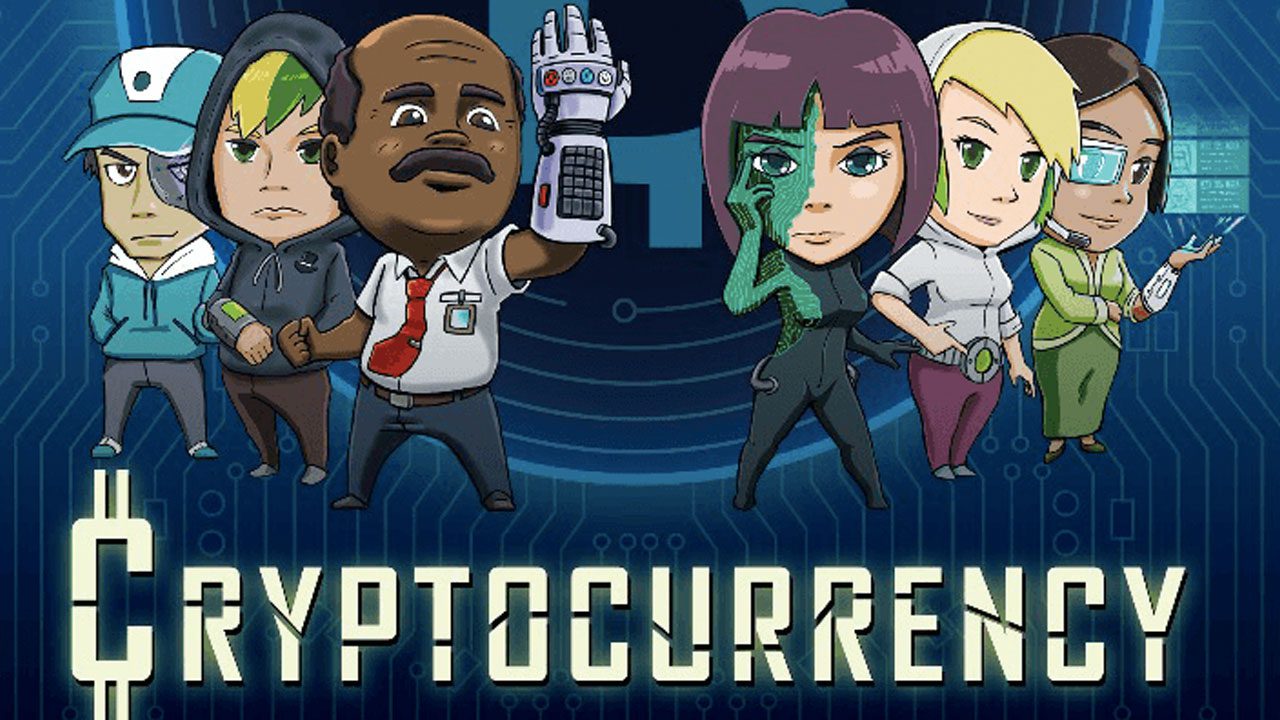

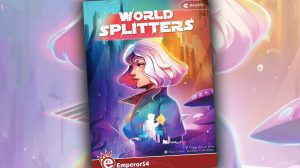







This sounds fascinating… Now I just need to convince some people to play it with me. 🙂
Why don’t stock market games reflect real-world investment?